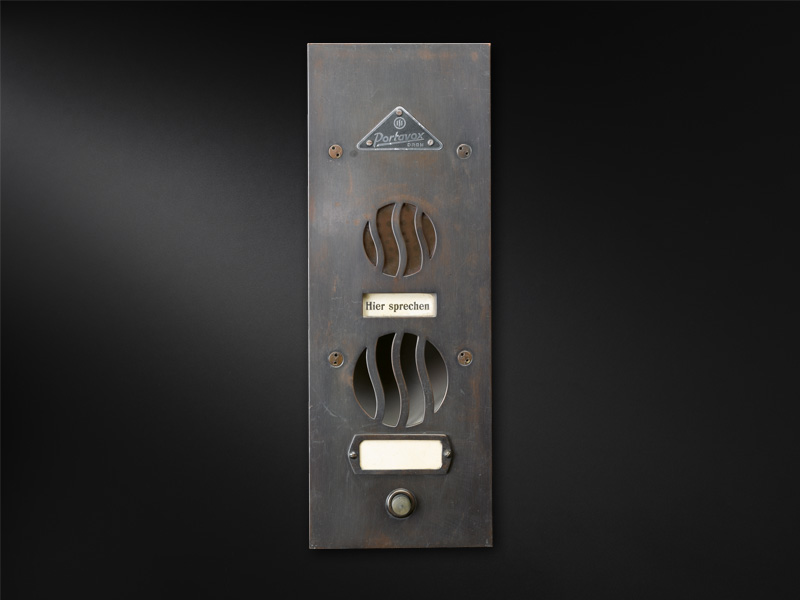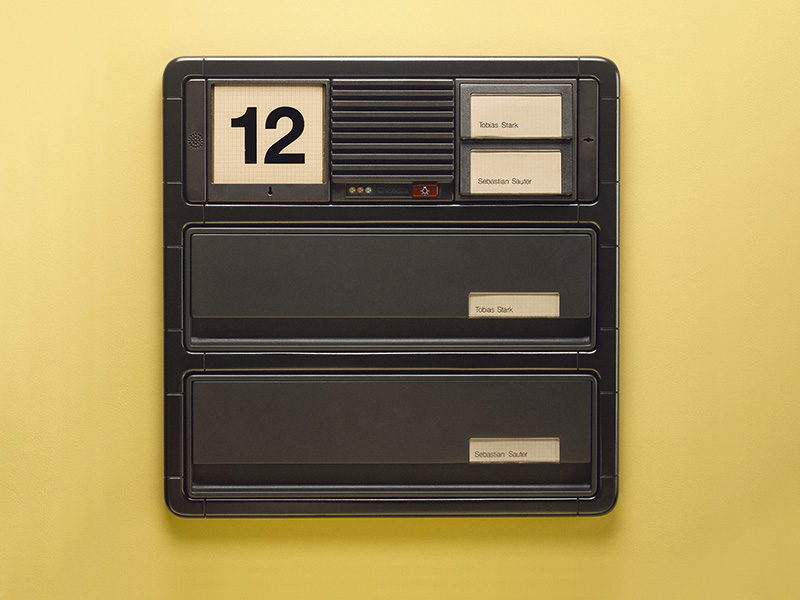- Welcome home
- Company
- Who we are
- History
History
Siedle has been producing in Furtwangen, in the middle of the Black Forest and 900 metres above sea level, since 1750. Such a tradition shapes the company, its people and the products they manufacture.
Casters, founders, producers: The owner

Andreas Siedle I.
1757–1814
Son of the founder, watchmaker and bell founder. The yard built by him in 1805 with its foundry (“Bregeme”) housed three generations of the Siedle founders.

Gabriele Siedle
1951
CEO and entrepreneur from 2000 to 2023 and since then the CEO of the holding and chair of the board of the family foundation. In a dynamic environment, shaped by globalisation, digitalisation and increased competition, Siedle is breaking new ground following the turn of the millennium. The businesses of tomorrow are all about networking, collaborations, software and service. Like the generations that came before her, Gabriele Siedle had to make the right changes at the right time to ensure the survival of this long-standing company.

Horst Siedle
1938-2019
Horst Siedle has been shaping the company for three decades, since 1970. Under his leadership, Siedle turned into a rapidly growing company with a global reputation. He promoted exports, justified the distinctive design orientation and initiated crucial innovations.

Max Helmut Siedle
1894-1976
The fifth son of Hektor Siedle lived and worked in New York, in Columbia, Switzerland, Holland and England before returning to Furtwangen and becoming CEO of S. Siedle & Söhne in 1951. The global citizen and pacifist was banned from working in 1944 because he was the only member of the Union of Electrical Wholesalers not to join the NSDAP Party. Like many Siedles, he had a strong artistic streak and devoted himself to painting in his free time.

Robert Siedle
1858–1926
Historian and innovator: Robert Siedle encouraged telephone and telegraph production, an innovation that was to ensure the company’s survival. He made a name for himself as a chronicler of his home country, his company and his family.

Karolina, widow of Salomon Siedle II.
approx. 1900
with eight of her 16 children and their spouses. Her daughter, Karoline (6th from the left) was one of the first women in the company. Without any formal training, which was reserved for men, she managed to become a clerk and head of coil winding. But the company's shareholders were Salomon Siedle and sons - her father and brothers, who she also ran the household.

Salomon Siedle II.
1830–1890
Founder, manufacturer, revolutionary: the son of Salomon I. joined the Baden Revolutionary Army in the fight against the Prussian troops. He introduced the transition to electrical engineering, founded the factory at its current location in 1870, and set up S. Siedle & Söhne in 1884.

Salomon Siedle I.
1787–1857
The “Bregeme-Salomon” achieved great fame as a bell founder. Demand for his products even reached the United States of America.

Andreas Siedle I.
1757–1814
Son of the founder, watchmaker and bell founder. The yard built by him in 1805 with its foundry (“Bregeme”) housed three generations of the Siedle founders.

Gabriele Siedle
1951
CEO and entrepreneur from 2000 to 2023 and since then the CEO of the holding and chair of the board of the family foundation. In a dynamic environment, shaped by globalisation, digitalisation and increased competition, Siedle is breaking new ground following the turn of the millennium. The businesses of tomorrow are all about networking, collaborations, software and service. Like the generations that came before her, Gabriele Siedle had to make the right changes at the right time to ensure the survival of this long-standing company.
Milestones: The right product at the right time

2012
The dawn of the digital world: the Siedle Access IP system

1935
Portavox, the first door loudspeaker

1972
Video Portavox, the first video door surveillance device on the German market

1975
HT 311, the first system telephone with various call button modules

1981
Siedle Vario 511, the first modular door loudspeaker system

1986
Siedle Multi, high-performance system for complex applications

1998
Siedle Vario 611, the extremely differentiated modular system

2000
Siedle Steel, high-end systems with customised production

2012
The dawn of the digital world: the Siedle Access IP system

1935
Portavox, the first door loudspeaker
Stations: Where we come from

A new purpose for the old villa
2000: The last remaining building of the original factory is restored. Today, it is home to company management, as well as the corporate communications and design departments.

Origin: The foundry
From 1750: Three generations of Siedle cast bells and clock parts at the Oberbregenbachhof near Furtwangen. The foundry has remained an important part of production for more than two centuries.

Foundation of the factory
1870: Salomon Siedle II turns the home workshop into industrial production and opens a factory in Furtwangen.

Industrialisation
1900: The factory grows and receives its first steam engine. Left foreground: the only building that survives today.

The great fire
1953: Reconstruction following a devastating fire that destroyed almost all factory buildings.

New beginnings
1965: A new office building is built on the original site.

Commitment: On-site logistics
1995: The logistics centre and high-bay warehouse begin operations.

A new purpose for the old villa
2000: The last remaining building of the original factory is restored. Today, it is home to company management, as well as the corporate communications and design departments.

Origin: The foundry
From 1750: Three generations of Siedle cast bells and clock parts at the Oberbregenbachhof near Furtwangen. The foundry has remained an important part of production for more than two centuries.

